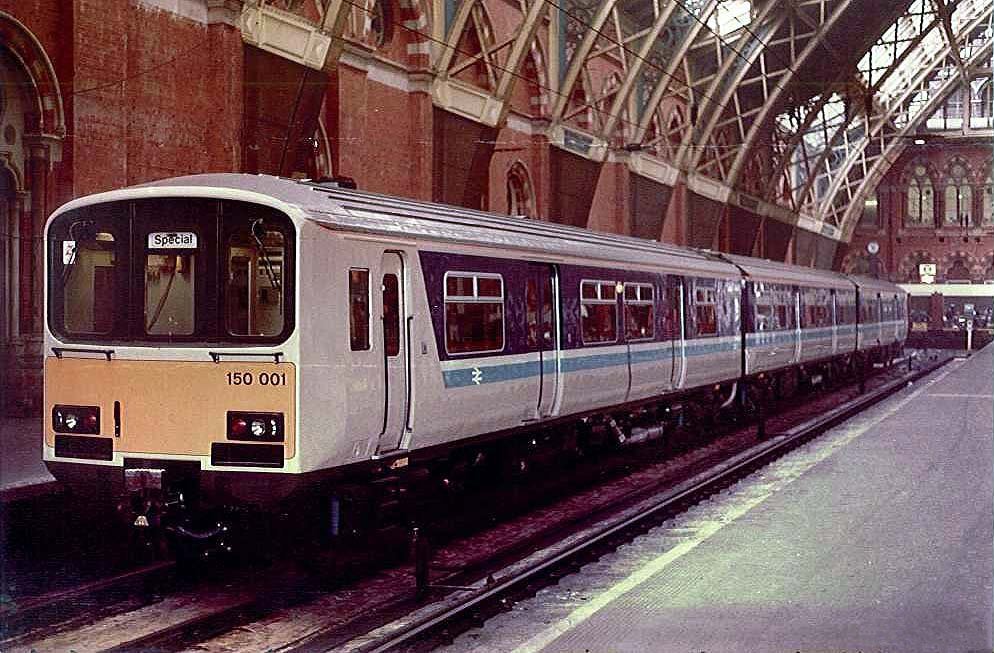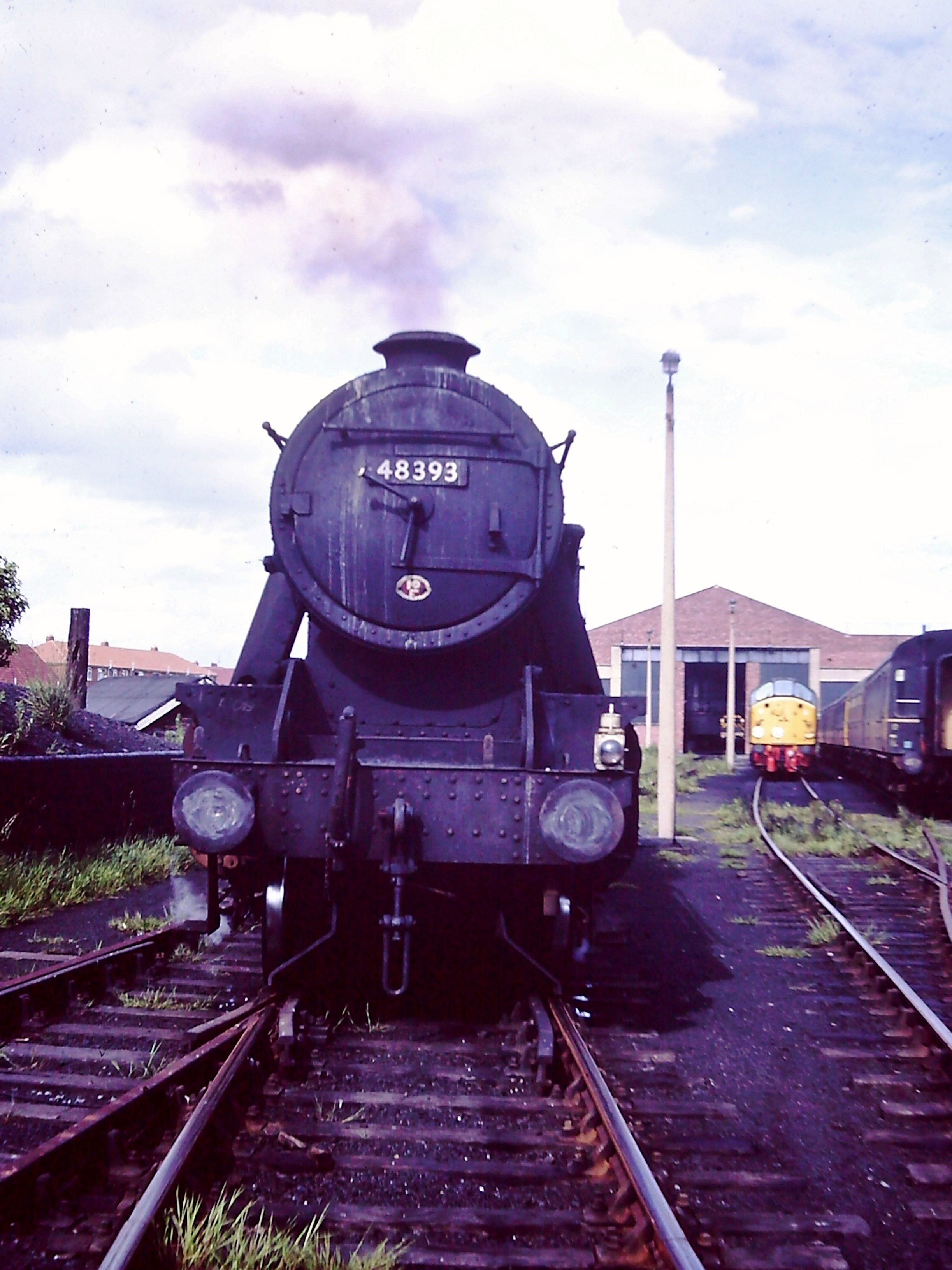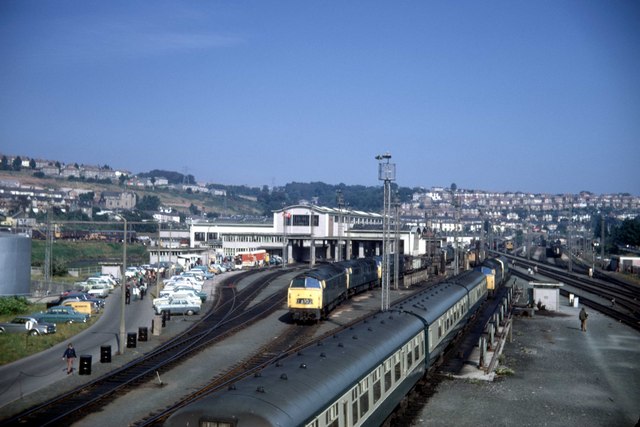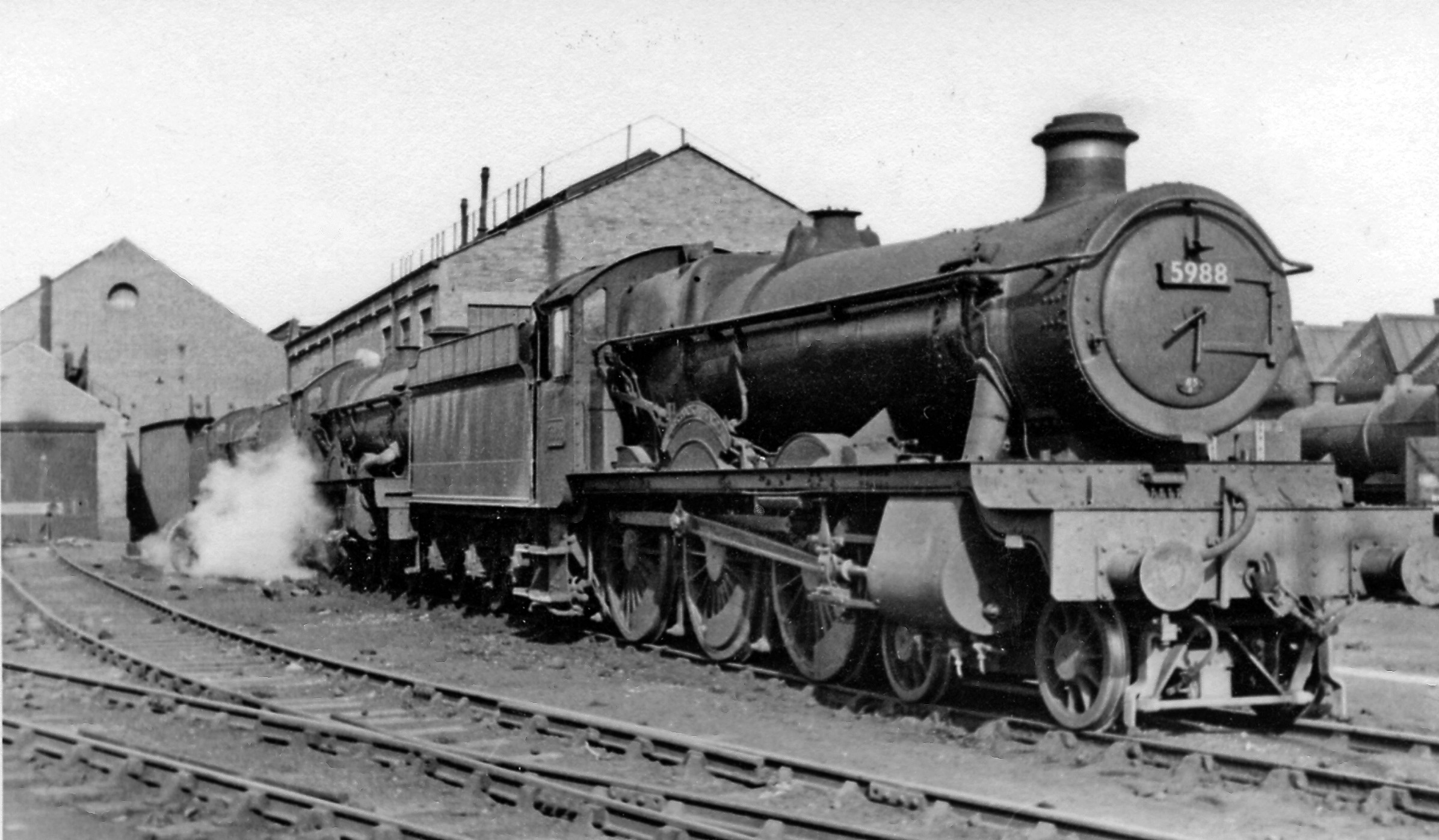|
British Rail Class 150
The British Rail Class 150 '' Sprinter'' is a class of diesel-hydraulic multiple unit passenger trains, developed and built by British Rail Engineering Limited at York Carriage Works between 1984 and 1987 for use on regional services across Great Britain. The type is a second-generation design, built to more modern standards and based on BR's Mark 3 body design for longer-distance services. It was developed alongside the lower-cost Pacers, which were built using bus parts, for use on short-distance services. Two prototype units were built, followed by 135 production units in two batches. Subsequently, further members of the Sprinter family were developed and introduced to service, including the Class 155, Class 156, Class 158 and Class 159. Background By the beginning of the 1980s, British Rail (BR) was operating a large fleet of first-generation DMUs of various designs. While formulating its long-term strategy for this sector of its operations, BR planners recognised ... [...More Info...] [...Related Items...] OR: [Wikipedia] [Google] [Baidu] |
The Railway Magazine
''The Railway Magazine'' is a monthly United Kingdom, British railway magazine, aimed at the Railfan, railway enthusiast market, that has been published in London since July 1897. it was, for three years running, the railway magazine with the largest circulation in the United Kingdom, having a monthly average sale during 2009 of 34,715 (the figure for 2007 being 34,661). It was published by IPC Media until October 2010, and in 2007 won IPC's 'Magazine of the Year' award. Since November 2010, ''The Railway Magazine'' has been published by Mortons of Horncastle. History ''The Railway Magazine'' was launched by Joseph Lawrence (British politician), Joseph Lawrence and ex-railwayman Frank E. Cornwall of Railway Publishing Ltd, who thought there would be an amateur enthusiast market for some of the material they were then publishing in a railway staff magazine, the ''Railway Herald''. They appointed as its first editor a former auctioneer, George Augustus Nokes (1867–1948), who ... [...More Info...] [...Related Items...] OR: [Wikipedia] [Google] [Baidu] |
ScotRail (National Express)
ScotRail was a train operating company in Scotland owned by National Express that operated the ScotRail franchise from March 1997 until October 2004. Prior to March 1997 ScotRail (British Rail) ran the trains and after October 2004 First ScotRail ran them. History During the 1990s, the British Government undertook the privatisation of British Rail; the formerly state-owned ScotRail (British Rail), ScotRail operation was the final of 25 passenger franchises to be bid for. On 1 April 1997, the British transport operator National Express took over operations of the franchise from incumbent British Rail; it operated under the ScotRail brand. During 2002, National Express claimed that, unless additional public funding was provided to operate the Caledonian Sleeper, the company could not afford to continue the service. Two years later, the operator was accused of misleading the travelling public about seat availability on its sleeper services, the alleged motive being to lower passen ... [...More Info...] [...Related Items...] OR: [Wikipedia] [Google] [Baidu] |
Neville Hill Depot
Neville Hill is a railway train maintenance depot in Osmondthorpe, Leeds, England on the Leeds to Selby Line. The depot is situated to the east of Leeds railway station on the north side of the line. The TOPS depot code is NL. History In 1899 the locomotive shed at Holbeck was found not to have sufficient capacity for the number of locomotives using it, so an additional depot was constructed at Neville Hill by the North Eastern Railway at a cost of £132,971, with the facility being extended in 1904. Sometime during the 1950s the four-roundhouse shed was reduced by half and given a new frontage. A DMU shed is believed to have been added in 1958 along with servicing facilities for diesels although main line locomotives such as Class 45s were still being stabled outside the old brick-built steam shed in 1961. D2000 series 0-6-0 diesel shunters were the first diesel locos allocated to Neville Hill, probably about that time; the quartet in 1961 comprised D2242-4/6. At the ... [...More Info...] [...Related Items...] OR: [Wikipedia] [Google] [Baidu] |
Laira Traction & Rolling Stock Maintenance Depot
Laira Traction and Rolling Stock Maintenance Depot is a railway traction maintenance depot situated in Plymouth, Devon, England. The depot is operated by Great Western Railway (GWR) and is where their fleet of InterCity Express Trains and remaining Castle Class trains are overhauled. Other trains visit for daily servicing including some operated by CrossCountry. After sixty years as a steam depot, servicing locomotives used on the Exeter to Plymouth line that runs past the shed as well as local lines, diesels started to arrive in 1958. A diesel depot opened in 1962 and was expanded in 1981 to accommodate the High Speed Trains. The depot code 'LA' is used to identify rolling stock based there. History Steam shed Laira was the location of the temporary terminus of the South Devon Railway from 5 May 1848 when a small engine shed would have been provided. With the completion of the line to Plymouth Millbay railway station on 2 April 1849 a new shed was provided there and t ... [...More Info...] [...Related Items...] OR: [Wikipedia] [Google] [Baidu] |
Exeter TMD
Exeter Traction Maintenance Depot (or Exeter TMD) is a railway Traction Maintenance Depot situated in Exeter, Devon, United Kingdom and is next to the city's main St Davids station. The depot is operated by Great Western Railway and has an allocation of diesel multiple units. The first engine shed on the site opened in 1844 and had an allocation of locomotives until 1963. It was rebuilt in 1976 but a larger three-road maintenance building and staff accommodation was opened in 2021. History An engine shed was opened at Exeter by the Bristol and Exeter Railway when it opened the line to here in 1844. A second facility was added a few years later by the South Devon Railway and the two were combined under the Great Western Railway (GWR) in 1876. The Bristol and Exeter had been worked by the GWR until 1849 but then purchased its own locomotives. Temporary workshops for these were built at Exeter but a permanent facility at Bristol was opened in 1851. When British Railways intro ... [...More Info...] [...Related Items...] OR: [Wikipedia] [Google] [Baidu] |
Cardiff Canton TMD
Cardiff Canton TMD is a diesel locomotive traction maintenance depot in Cardiff, Wales. Its depot code is CF. It is operated by Transport for Wales. The depot is used by Transport for Wales fleet, GWR Class 158s and some Cross Country Class 170s. In steam days the depot was called Cardiff Canton and its shed code was 86C. It was built in 1882 as the main maintenance base for the South Wales Railway and the major Welsh engineering base for the Great Western Railway (GWR). After nationalisation in 1948 it was a heavy overhaul base for British Railways. After privatisation in the mid-1990s the depot became a joint Arriva Trains Wales and English Welsh & Scottish facility. The EWS depot closed as a maintenance centre from 10 December 2005, but EWS' successor DB Cargo UK still uses the depot for long-term storage and occasional stabling. History Steam Cardiff Canton was opened in June 1882 as a six road, -long shed, built to replace Long Dyke, east of Cardiff General station ... [...More Info...] [...Related Items...] OR: [Wikipedia] [Google] [Baidu] |
Rail Magazine
''Rail'' is a British magazine on the subject of current rail transport in Great Britain. It is published every two weeks by Bauer Consumer Media and can be bought from the travel sections of UK newsstands. It is targeted primarily at the enthusiast market, but also covers issues relating to rail transport. ''Rail'' is more than four decades old, and was called ''Rail Enthusiast'' from its launch in 1981 until 1988. It is one of only two railway magazines that increased its circulation. It has roughly the same cover design for several years, with a capitalised italic red ''RAIL'' along the top of the front cover. Editorial policy ''Rail'' is customarily critical of railway institutions, including the Rail Delivery Group, the Office of Rail and Road, as well as, since it assumed greater railway powers, the Department for Transport. ''Rail's'' continuing campaigns include one against advertising and media images showing celebrities and others walking between the rails (an ... [...More Info...] [...Related Items...] OR: [Wikipedia] [Google] [Baidu] |
Bletchley TMD
Bletchley TMD is a railway traction maintenance depot situated in Bletchley, Milton Keynes in Buckinghamshire, to the north east of Bletchley railway station, on a siding off the Marston Vale line. The depot is operated by West Midlands Trains (trading as London Northwestern Railway). History The original London and North Western Railway locomotive shed in Bletchley was a wooden and galvanised iron building that catered for some twelve engines, with three roads accommodated within the facility. Chapter Five However during the 1870s the shed collapsed in a gale, burying stabled locomotives and was replaced by two gabled roof spans with numerous ducts and chimneys. When newly rebuilt, it would measure in length, with a maximum width of . These sheds were situated just north of the railway station on a siding to the west side of the West Coast Main Line, on a site now occupied by today's carpark. Towards the end of the 19th century, a number of LNWR Lady of the Lake class stea ... [...More Info...] [...Related Items...] OR: [Wikipedia] [Google] [Baidu] |
London Midland
London Midland was a train operating company in England which operated the West Midlands franchise between 11 November 2007 and 10 December 2017. It was owned by the British transport group Govia. London Midland was created as a result of Govia being awarded the West Midlands franchise on 22 June 2007. This franchise had emerged out of a reorganisation conducted by the Department for Transport, which had combined elements of the Silverlink and Central Trains operations together. London Midland had various commitments to fulfil during the franchise period, including the procurement of at least 37 new multiple units, the introduction of a semi-fast service between London and Crewe, and to invest at least £11.5m into stations. Early rolling stock orders totalled 66 new trains, including two Class 139 ''Parry People Movers'', 12 two-car and 15 three-car Class 172 ''Turbostars'' and 37 four-car Class 350/2 ''Desiros''. Further orders and reorganisations of rolling stock would ... [...More Info...] [...Related Items...] OR: [Wikipedia] [Google] [Baidu] |
Central Trains
Central Trains was a train operating company in the United Kingdom owned by National Express that operated a variety of local and inter-regional trains from 2 March 1997 until 11 November 2007. Overview Created out of the Central division of Regional Railways during the Privatisation of British Rail, Central Trains passed into the private sector on 2 March 1997. The franchise was awarded to National Express, who maintained control of the company until its eventual demise in 2007. Central Trains employed over 2,400 staff. The company invested significantly in rolling stock, with significant orders for new trains placed and the fleet later further grown through the acquisition of trains made surplus by other companies. Despite a reduction in the area covered during the ten years of its existence, the company grew its core fleet from fewer than 300 passenger vehicles to a total of 379 – a capacity increase of over 28%. It also refurbished a number of its stations, introducing t ... [...More Info...] [...Related Items...] OR: [Wikipedia] [Google] [Baidu] |
London Overground
London Overground (also known simply as the Overground) is a Urban rail in the United Kingdom, suburban rail network serving London and its environs. Established in 2007 to take over Silverlink Metro routes, it now serves a large part of Greater London as well as Hertfordshire, with 113 stations on the six lines that make up the network. The Overground forms part of the United Kingdom's National Rail network but it is under the Rail franchising in Great Britain#Concessions, concession control and branding of Transport for London (TfL). Operation has been contracted to Arriva Rail London since 2016. TfL previously assigned orange as a mode-specific colour for the Overground in branding and publicity including the Roundel (London Transport), roundel, on the Tube map, trains and stations. In 2024, each of the six Overground lines were given distinct colours and names – Lioness line, Lioness, Mildmay line, Mildmay, Windrush line, Windrush, Weaver line, Weaver, Suffragette line, ... [...More Info...] [...Related Items...] OR: [Wikipedia] [Google] [Baidu] |
Silverlink
Silverlink was a train operating company in the United Kingdom owned by National Express that operated the North London Railways franchise from March 1997 until November 2007. At the end of 2007, Silverlink Metro services were taken over by London Overground and Silverlink County services were taken over by London Midland. History The North London Railways franchise was awarded to National Express on 7 February 1997. National Express commenced operating the franchise on 3 March 1997. After initially trading as North London Railways, in September 1997 the franchise was rebranded as Silverlink. The franchise was due to finish on 15 October 2006, but on 11 August 2006 the Department for Transport granted an extension until 10 November 2007. Upon its closure, its London metro services were taken over by London Overground and the remainder were merged with Central Trains' western services to form London Midland. Branding Silverlink had two sub-brands: Silverlink Metro was u ... [...More Info...] [...Related Items...] OR: [Wikipedia] [Google] [Baidu] |







